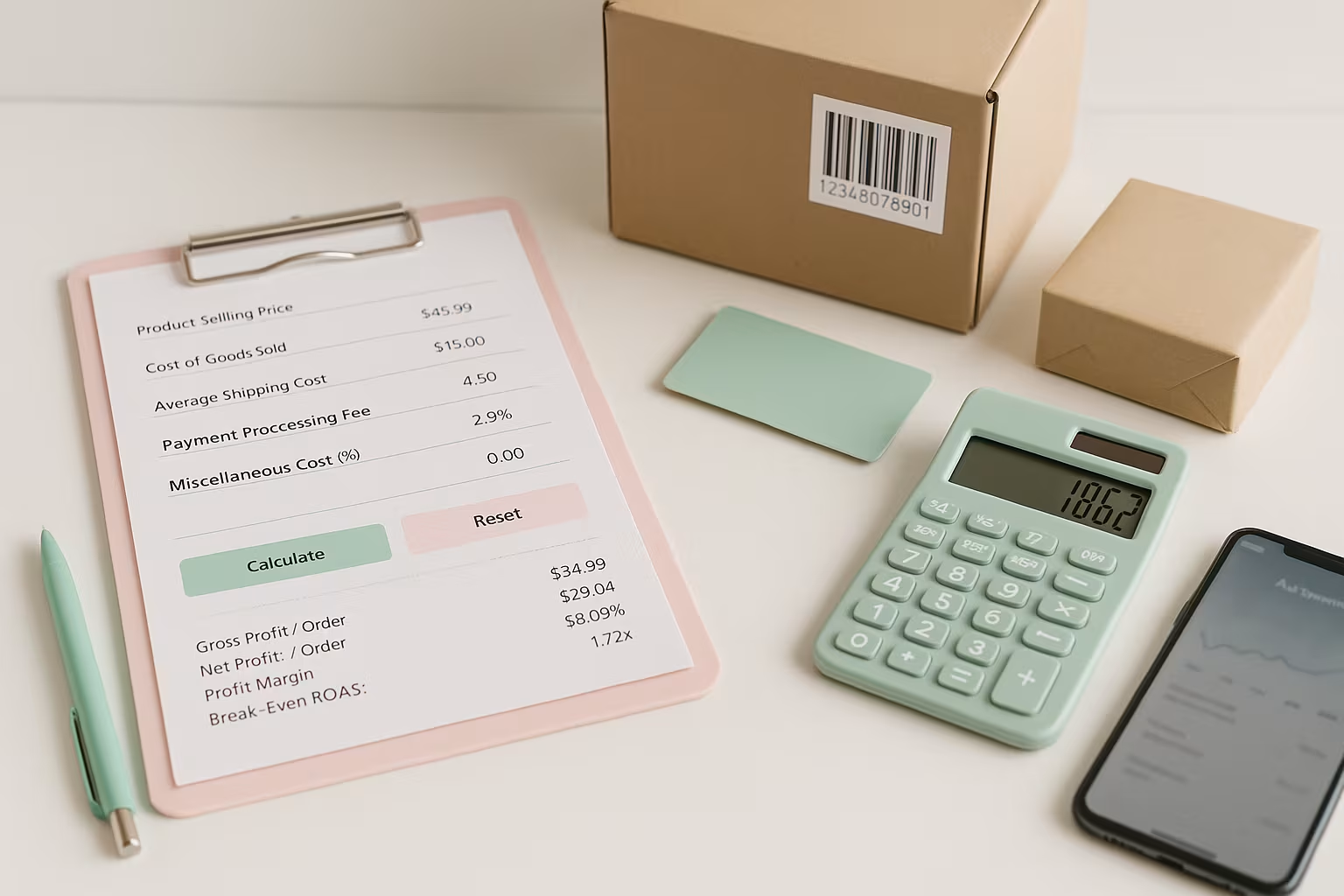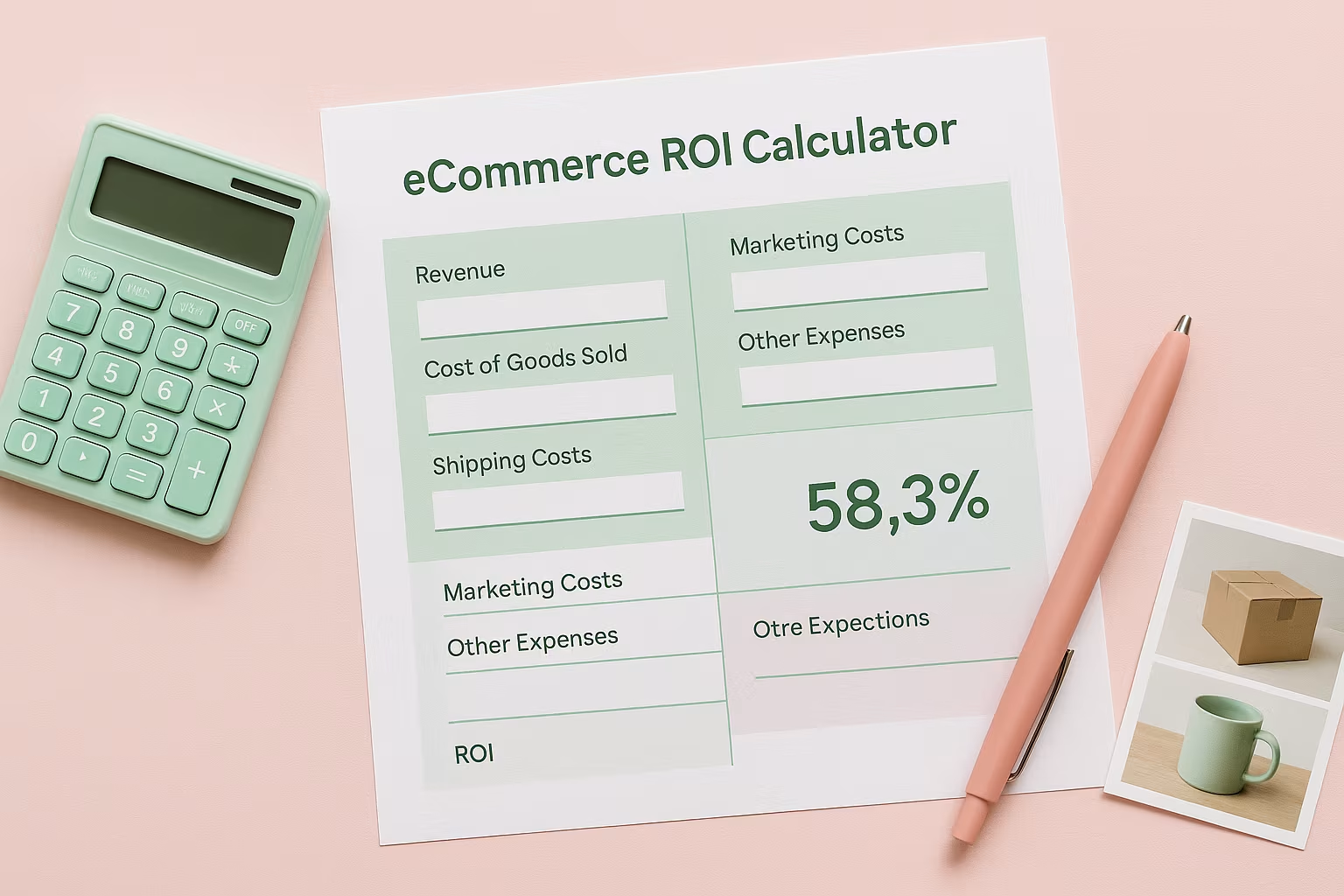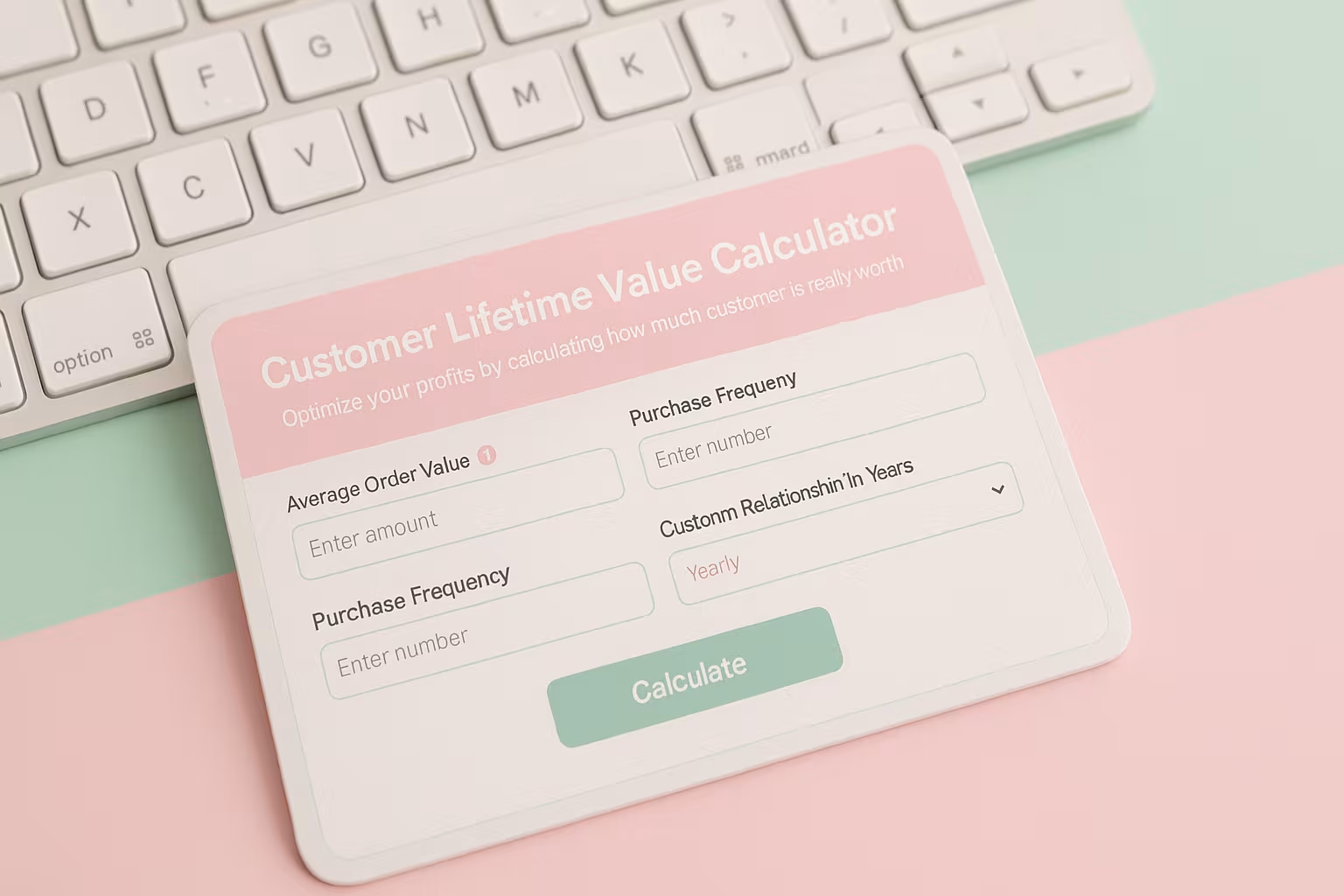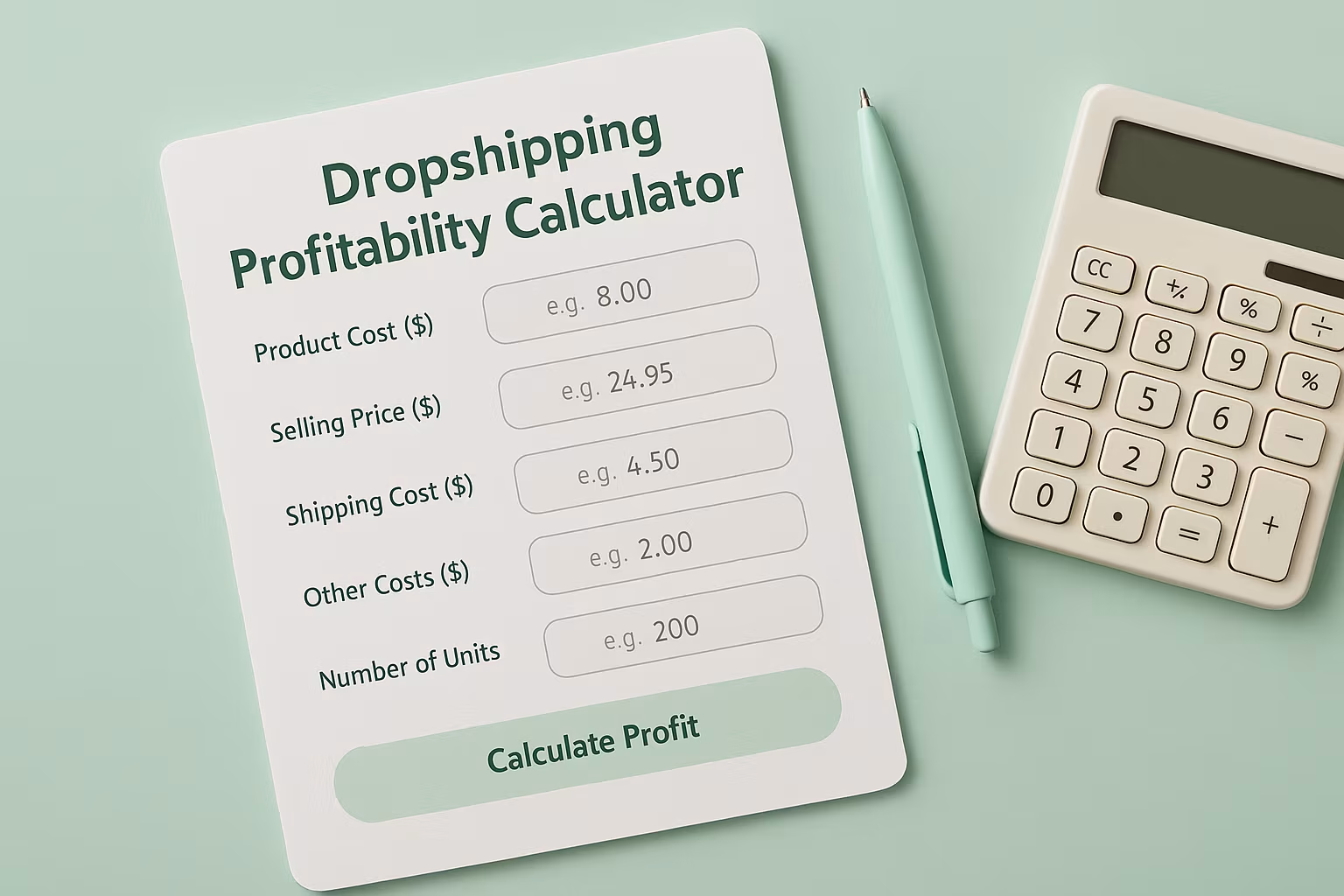How to Calculate Upsell Rate for Your Dropshipping Business? Basic Formulation

Studies show that upselling existing customers is 60–70% more effective than acquiring new ones. Yet many dropshippers still overlook this powerful revenue lever.
That’s why learning how to calculate upsell rate for your dropshipping business is essential.
This metric reveals how well your product recommendations convert, helping you optimize offers, increase order value, and grow sustainably without extra acquisition costs.
Calculating the Metric That Powers Dropshipping Growth: Upsell Rate
The basic formula for calculating the upsell rate is:
Upsell Rate = (Number of Orders with Upsells ÷ Total Number of Orders) × 100
For example, if you had 500 total orders in a month, and 150 of those orders included upsells, your upsell rate would be:
(150 ÷ 500) × 100 = 30%
This means 30% of your customers purchased a higher-priced option or added premium features to their initial selection.
Deeper Metrics for Advanced Analysis
While the basic upsell rate gives you a good overview, consider tracking these additional metrics for more comprehensive insights:
1. Average Upsell Value
Average Upsell Value = Total Upsell Revenue ÷ Number of Orders with Upsells
This tells you how much additional revenue each successful upsell generates on average.
2. Upsell Conversion Rate by Product
Product Upsell Rate = (Number of Upsells for Specific Product ÷ Number of Base Product Sales) × 100
This helps identify which products have the most successful upsell opportunities.
3. Upsell Revenue Contribution
Upsell Revenue Contribution = (Total Upsell Revenue ÷ Total Revenue) × 100
This shows what percentage of your overall revenue comes from upsells, helping you understand their impact on your business.
Tools for Tracking Upsell Performance

To calculate these metrics accurately, you'll need proper tracking tools:
E-commerce Platform Analytics
Most e-commerce platforms offer basic analytics that can help track upsell performance:
- Shopify: Use the Sales by Product report and combine it with apps like Bold Upsell or Zipify OCU
- WooCommerce: WooCommerce Advanced Reporting, or plugins like YITH WooCommerce Dynamic Pricing and Discounts
- BigCommerce: Built-in analytics plus apps like Boost Sales or ReConver, the Upsell & Cross-Sell
Google Analytics Enhanced E-commerce
Set up Enhanced E-commerce in Google Analytics to track the complete purchase journey, including:
- Product detail views
- Add-to-cart actions
- Checkout steps
- Purchase completion
By setting up proper event tracking, you can see which upsell offers convert best and at which point in the customer journey.
Dedicated Upsell Apps
Consider using specialized tools for upselling:
- CartHook
- One Click Upsell
- Frequently Bought Together
- Post-purchase upsell apps
These tools not only help implement upsell strategies but also provide detailed analytics on performance.
Benchmarks: What's a Good Upsell Rate?
Upsell rates vary significantly across industries, price points, and product types. However, some general benchmarks can help you gauge your performance:
- 5-10%: Below average, indicates room for improvement
- 10-25%: Average performance for most dropshipping stores
- 25-40%: Strong performance, indicating effective upsell strategies
- 40 %+: Exceptional performance, typically seen in highly optimized stores with complementary product offerings
Pro tip: Don't just compare your upsell rate to industry averages. Track your trends over time and measure improvements against your baseline. A 5% increase from your baseline often delivers more value than trying to match an arbitrary industry benchmark.
Strategic Ways to Improve Your Upsell Rate
Once you've calculated your upsell rate, focus on these proven strategies to improve it:
1. Optimize Upsell Timing
The timing of your upsell offer significantly impacts conversion rates:
- Pre-purchase: Show premium alternatives on product pages
- Cart page: Suggest upgrades before checkout
- Checkout page: Offer last-minute, low-friction upgrades
- Post-purchase: Present upsells immediately after purchase, while buying momentum is high
Testing different timing points can reveal when your customers are most receptive to upsells.
2. Use the Rule of Three
When presenting upsell options, offer three tiers:
- Basic (your standard product)
- Premium (20-30% more expensive with clear added value)
- Deluxe (50-100% more expensive with maximum features)
Most customers gravitate toward the middle option, making your premium tier the sweet spot for increasing order value without pushing boundaries too far.
3. Create Irresistible Upsell Bundles
Bundling complementary products creates a compelling value proposition. For effective bundles:
- Ensure all products logically complement each other
- Offer a modest discount compared to buying items separately
- Communicate the total value and savings
- Use visual elements to showcase the complete bundle
Scaling your dropshipping business often hinges on creating these value-packed bundles that increase perceived value.
4. Implement Psychological Pricing Techniques
Leverage psychology to make upsells more attractive:
- Anchoring: Show the premium option first to make other options seem more reasonable
- Decoy pricing: Add a third, slightly less attractive option to make your target upsell seem like a better deal
- Urgency: Add limited-time offers to encourage immediate upsell decisions
- Social proof: Show how many others chose the premium option
5. Automate and Personalize Upsells
Personalized upsell recommendations convert significantly better than generic ones:
- Use customer browsing history to suggest relevant upgrades
- Leverage purchase history for personalized recommendations
- Segment customers and create tailored upsell strategies for each segment
- Implement AI-powered recommendation engines for dynamic upselling
Common Upsell Rate Calculation Mistakes to Avoid

When tracking your upsell performance, watch out for these common pitfalls:
1. Mixing Upsells and Cross-sells
Many dropshippers mistakenly combine upsell and cross-sell data. Keep these metrics separate to accurately assess performance and optimize each strategy independently.
2. Not Accounting for Seasonal Variations
Upsell rates often fluctuate seasonally. Compare year-over-year data for the same periods rather than sequential months to account for these natural variations.
3. Ignoring Customer Segments
Different customer segments respond differently to upsells. Calculate segment-specific upsell rates to identify which customer groups are most receptive to premium offers.
4. Overlooking Influence on Customer Lifetime Value
Aggressive upselling might boost short-term revenue but harm customer retention. Always view upsell rate alongside customer retention metrics to ensure you're not sacrificing long-term value for short-term gains.
5. Focusing Solely on Rate, Not Revenue
A high upsell rate with low-value upsells might be less profitable than a lower rate with high-value upsells. Always consider the revenue impact alongside the conversion rate.
Upsell Strategies by Product Category
Different product categories require tailored upsell approaches. Here are strategies for common dropshipping categories:
Fashion and Apparel
- Upsell to premium materials or designer versions
- Offer bundle deals (complete the outfit)
- Suggest seasonal upgrades or limited editions
For private label products in beauty or skincare, upselling to premium formulations or larger sizes can significantly increase your profit margins in dropshipping.
Electronics and Gadgets
- Offer extended warranties or protection plans
- Upsell to models with additional features
- Suggest premium accessories as package deals
Health and Wellness
- Upgrade to larger supply packages (30-day to 90-day)
- Offer premium formulations with additional benefits
- Create subscription options with loyalty pricing
Private label skincare businesses can particularly benefit from tiered product offerings that encourage customers to upgrade to premium formulations.
Home and Lifestyle
- Upsell from single items to complete sets
- Offer premium versions with additional features
- Create tiered packages (good, better, best)
Integrating Upsells with Customer Retention Strategies

Effective upselling should complement your customer retention efforts. When calculating and optimizing your upsell rate, consider how it fits into your broader retention strategy:
- Offer loyalty-based upsells for repeat customers
- Create tiered membership programs that automatically include premium features
- Design post-purchase upsell sequences that lead into replenishment reminders
Measuring Success: Beyond the Basic Upsell Rate
As your dropshipping business matures, evolve your upsell metrics to gain deeper insights:
1. Upsell Effect on Customer Lifetime Value (CLV)
Calculate how accepting upsells affect a customer's total spending over their lifetime with your store. Customers who accept initial upsells often have significantly higher lifetime values.
2. Retention Rate by Upsell Acceptance
Compare retention rates between customers who accepted upsells versus those who didn't. This reveals whether your upsells truly add value or potentially harm the customer relationship.
3. Repeat Upsell Acceptance Rate
Track what percentage of customers who accepted an upsell once will accept another upsell in future purchases. This indicates the quality and value perception of your premium offerings.
Turning Data Into Action: Your Expert Upsell Optimization Plan
Now that you understand how to calculate and improve your upsell rate, follow this action plan:
- Establish your baseline upsell rate using the formulas provided
- Set realistic improvement goals (aim for 3-5% improvement initially)
- Implement one strategic change at a time and measure results
- A/B test different upsell offers, timings, and presentations
- Analyze data weekly to identify winning strategies
- Scale successful approaches across your product catalog
Your Path to Dropshipping Profitability Through Strategic Upselling
Calculating and optimizing your upsell rate isn't just about tracking another metric; it's about fundamentally shifting your business model toward higher profitability.
By focusing on increasing customer value rather than just customer acquisition, you'll build a more sustainable dropshipping business that can thrive even in competitive markets.
The most successful dropshipping stores don't just sell products; they create opportunities for customers to enhance their experience through thoughtful upgrades and premium options. Start measuring your upsell performance today, implement the strategies outlined above, and watch your average order value and overall profitability grow.
FAQ
Related blogs

Break-Even ROAS Calculator: Find Out What You Can Afford to Spend on Ads

Ecommerce ROI Calculator: Scale Your Store

Customer Lifetime Value Calculator: Unlock Your E-commerce Revenue Potential


